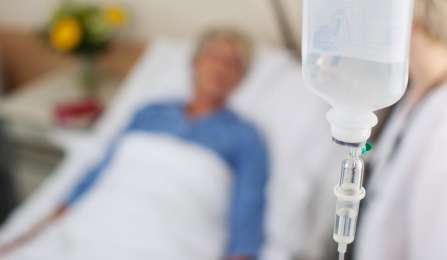Poor compliance by hospitals places patients at risk for opioid-induced respiratory depression

Nearly 75 percent of hospitalized patients receiving opioids for pain management are not monitored according to hospital guidelines.
A study led by University at Buffalo nursing researcher Carla Jungquist reveals that the vast majority of post-operative patients given opioid medications through intravenous infusions are not monitored often enough to detect respiratory depression, a potentially deadly result of overdose.
Post-operative patients are at highest risk for respiratory depression during the first 48 hours of recovery due to the combined effect of anesthesia and opioid medication, says Jungquist.
"No one should go into a hospital and leave dead because we were aggressive with their pain management yet didn't provide safety measures," says Jungquist, PhD, assistant professor in the UB School of Nursing.
The study, "Avoiding Adverse Events Secondary to Opioid-Induced Respiratory Depression," was published earlier this year in the Journal of Nursing Administration.
The researchers analyzed more than 4,000 patient records at eight hospitals around the nation. The data uncovered whether nurses followed protocol to monitor blood oxygen saturation, respiratory rate and level of sedation every two to four hours for the first 24 hours after surgery.
The results found that just under 27 percent of patients received all three assessments every four hours. And only 8 percent of patients received the assessments every two hours.
Nurses measured sedation scores least often, with a third of patients receiving this assessment every four hours. The finding is concerning, says Jungquist, since excessive sedation can precede respiratory depression.
Jungquist attributes the poor compliance to excessive workloads for nursing staff and to hospitals lacking policies that enforce guideline compliance.
"When hospitals have a death, they quickly get on board and adopt policies that are more aggressive," says Jungquist, who recommends that hospitals shorten four-hour intervals to every two hours.
"Practice is starting to change, but it has taken way too many years and too many deaths."
Although hospitals don't track or report near misses – unplanned events that could have resulted in death or injury – the study found 55 instances where nursing staff used naloxone, an emergency treatment for opioid overdose. Those instances accounted for more than 1 percent of patients.
No patients who were assessed every two hours using all three measures received naloxone.
"What if they didn't catch it quickly enough?" says Jungquist. "We can avoid adverse events if we step up monitoring. When we find a patient who is sensitive to opioids, institute pain management strategies that include opioids only at a low dose. It is certainly feasible. Practice just needs to change."
More information: Carla R. Jungquist et al. Avoiding Adverse Events Secondary to Opioid-Induced Respiratory Depression, JONA: The Journal of Nursing Administration (2016). DOI: 10.1097/NNA.0000000000000301

















